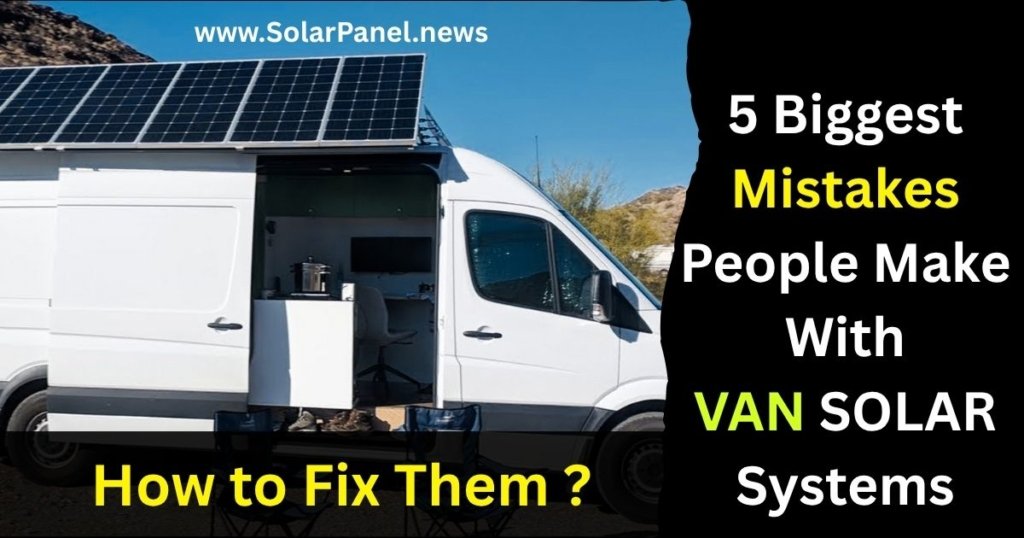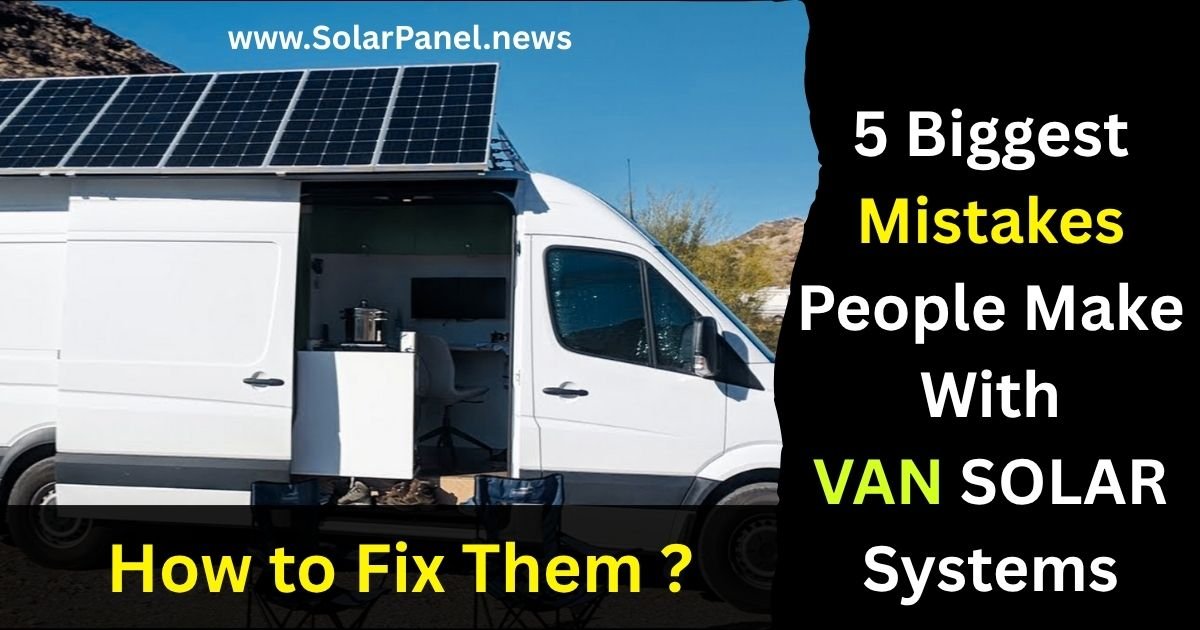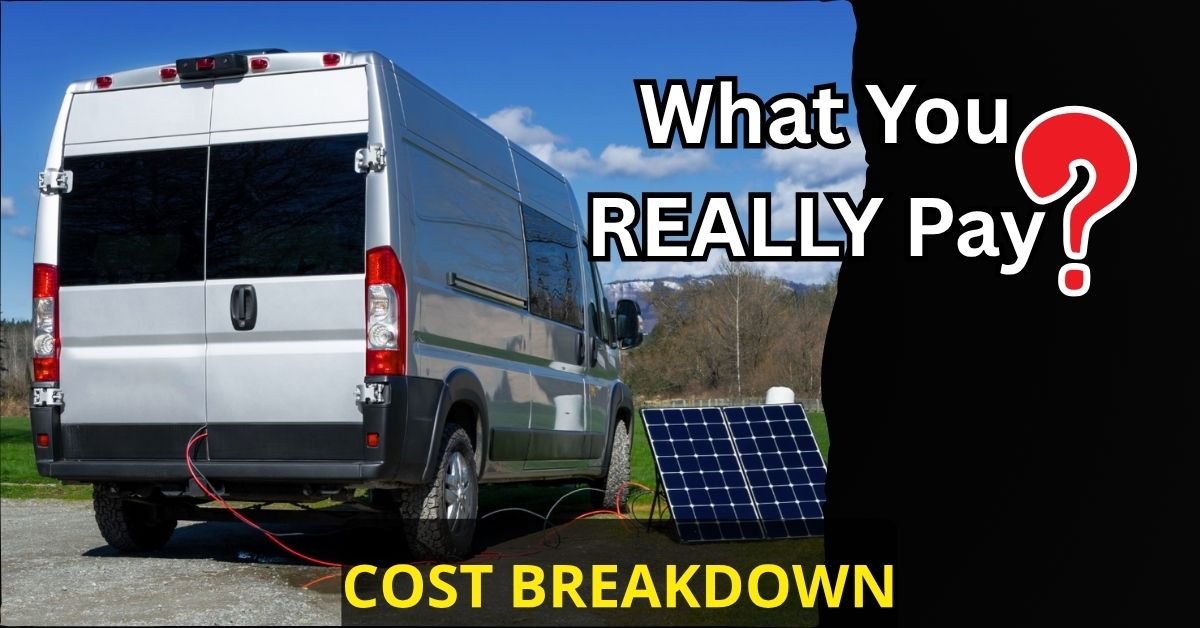If you’re dreaming of van life powered by the sun, this article is for you, Buddy! Solar is a game-changer for off-grid freedom—but only if it’s done right. Many vanlifers rush into installing solar without fully understanding what they need, and end up frustrated when the system underperforms (or fails entirely).
A bad install or oversight can kill your off-grid dream. Here are the five most common solar mistakes—and how to fix them before it’s too late.

1. Underestimating Power Needs
The mistake:
Many first-time vanlifers assume a small solar setup is enough—until their battery dies in the middle of nowhere. They install a single panel or budget kit without calculating how much energy their lifestyle actually requires.
The fix:
Create a power budget. List every device you’ll use—laptop, fridge, lights, fans—and tally the daily watt-hours. Multiply daily usage by at least 1.3× to account for inefficiency and cloudy days.
Pro Tip:
Apps like VictronConnect or SunCalc can help you visualize your energy demand before you buy anything. When in doubt, oversize your system—you’ll never regret having more power.
2. Poor Wiring or Loose Connections
The mistake:
Improper wiring—like using undersized cables or skipping fuses—can lead to overheating, voltage drop, or even fire. Loose connections are also a silent killer, causing power loss or corrosion over time.
The fix:
Always match your wire gauge to the current load and cable length. Use high-quality MC4 connectors, fuse blocks, and crimping tools.
“I had no idea how much power I was losing until I fixed my wiring. My fridge finally ran through the night after tightening just one connection.” — Tyler, Full-time vanlifer in Arizona
Essential Gear ( Amazon Finds):
3. Skipping Charge Controllers
The mistake:
Some DIYers try to wire solar panels directly to batteries—big no-no. Others cheap out on basic PWM controllers instead of using efficient MPPT ones.
The fix:
Always use a charge controller. MPPT controllers cost more upfront but harvest up to 30% more power, especially in cold or cloudy weather.
Best Practice:
Install the controller as close to the battery as possible to minimize voltage drop. Look for controllers with Bluetooth monitoring so you can track performance in real-time.
4. Ignoring Orientation & Tilt
The mistake:
A flat panel might be convenient on a van roof, but it sacrifices energy production—especially in winter or northern regions.
The fix:
If you’re stationary for long periods, use tilt brackets or a portable fold-out panel you can angle toward the sun. Even a 15–30° tilt can drastically boost efficiency in low-angle sunlight.
Spatial Tip:
On winter mornings in the Pacific Northwest, a tilted panel can produce double the energy of a flat one. That’s the difference between hot coffee and cold cereal.
5. Neglecting Maintenance
The mistake:
Once solar is installed, many forget about it. But dirt, corrosion, and loose screws slowly eat away at performance.
The fix:
Schedule quick monthly checkups:
- Wipe panels clean with a damp cloth
- Check terminals for rust or looseness
- Use a multimeter to verify voltages and current draw
“I thought my panel was failing—but it was just dusty. After cleaning it, I got 20% more output instantly.” — Janet, Boondocker near Moab
Fixes & Gear Suggestions
A few affordable tools can make all the difference between constant troubleshooting and smooth solar sailing.
🔧 Must-Have Solar Fix Gear for Vanlifers
| Product | Use Case | Key Features | Why It Helps |
| KAIWEETS Digital Multimeter | Testing voltage, current, continuity | Auto-ranging, backlit screen, CAT III 600V | Quickly diagnose battery or wiring issues |
| Renogy Rover 40A MPPT Charge Controller | Efficient battery charging | Up to 98% tracking efficiency, LCD, 4-stage charging | Boosts energy harvest, especially in poor light |
| BougeRV Solar Extension Cable Kit | Safe cable runs | 10AWG, UV-resistant, MC4 connectors | Reduces voltage drop over long runs |
Conclusion,
The freedom of vanlife is incredible—but only if your power system keeps up. Avoid these five mistakes and you’ll not only save time and money, but also avoid dangerous failures. Whether you’re just starting out or upgrading your setup, investing in reliable gear like a solid multimeter or MPPT controller can pay for itself in peace of mind.
Stay powered, stay free—and don’t forget to double-check those connections before your next big adventure.







